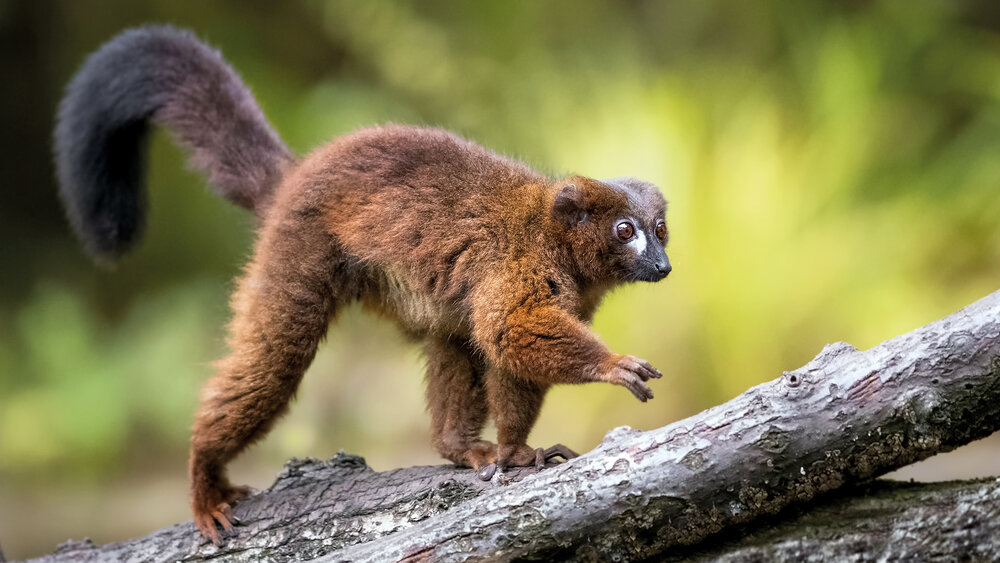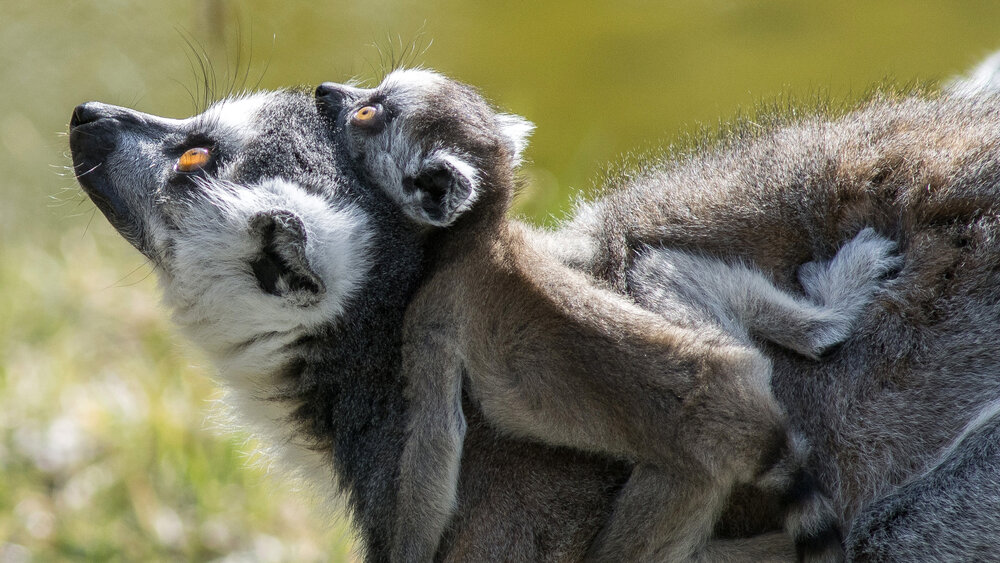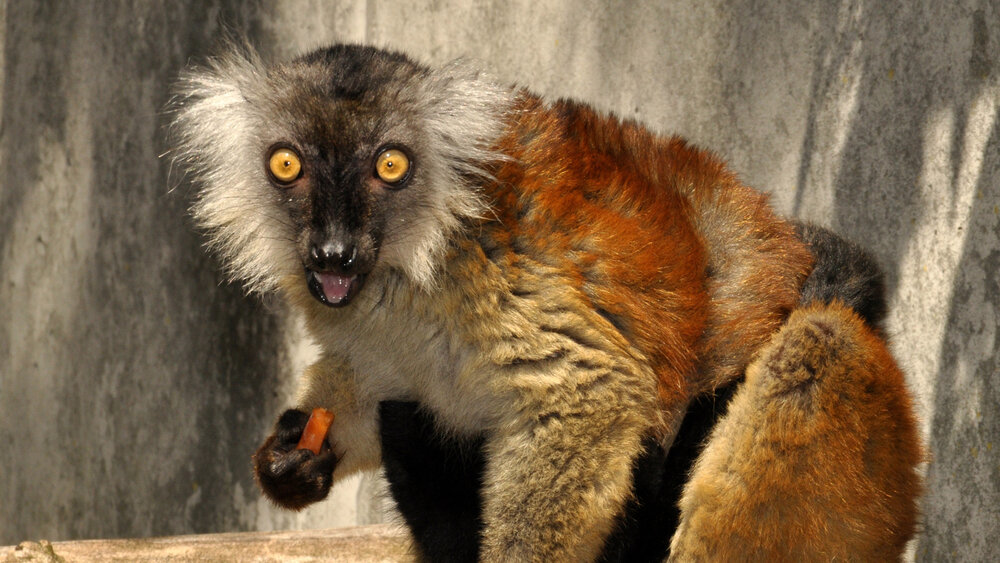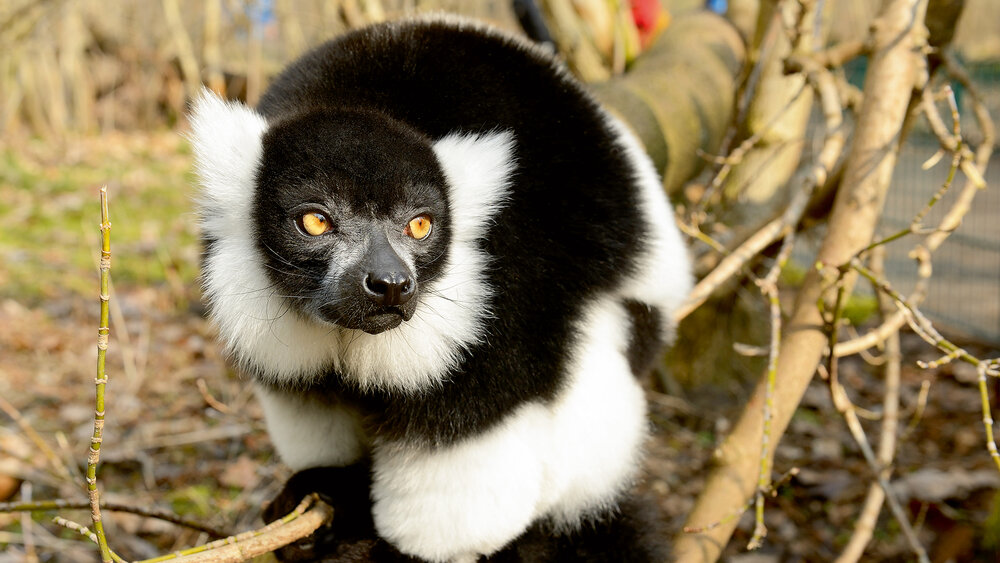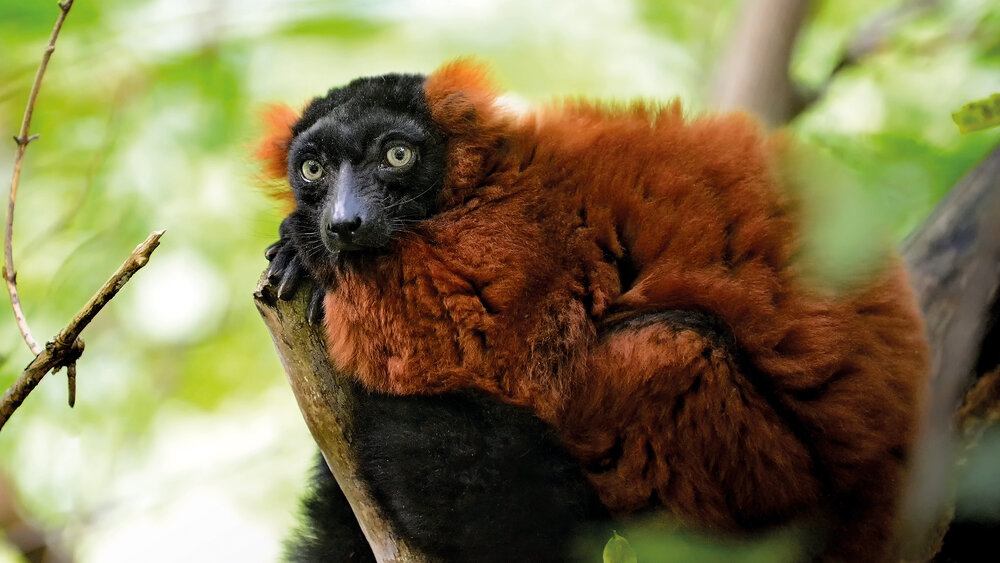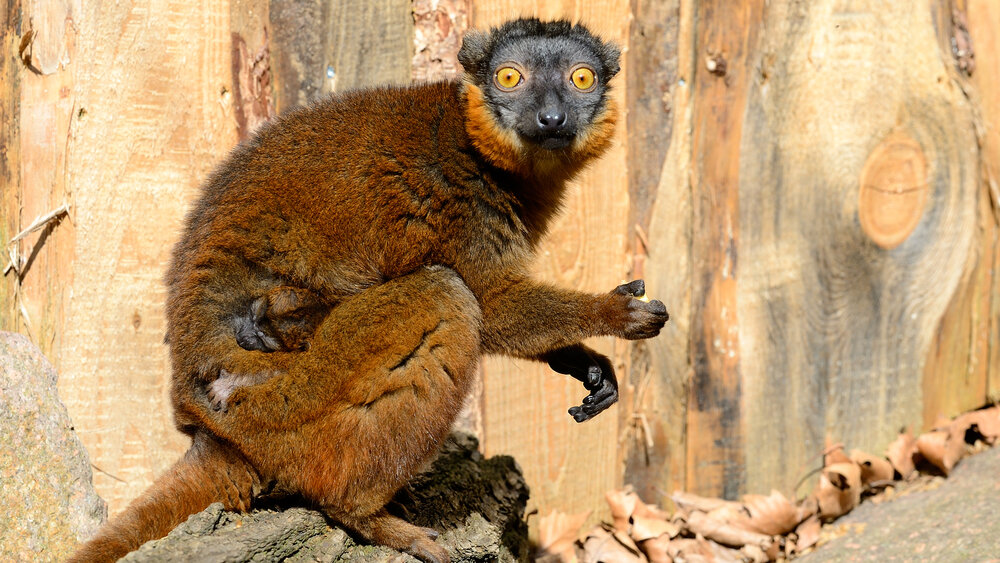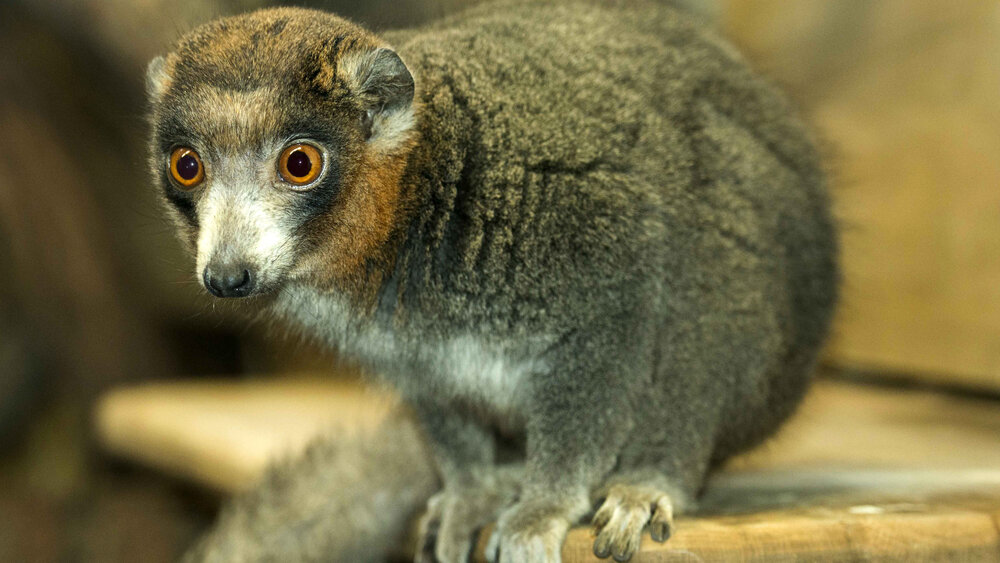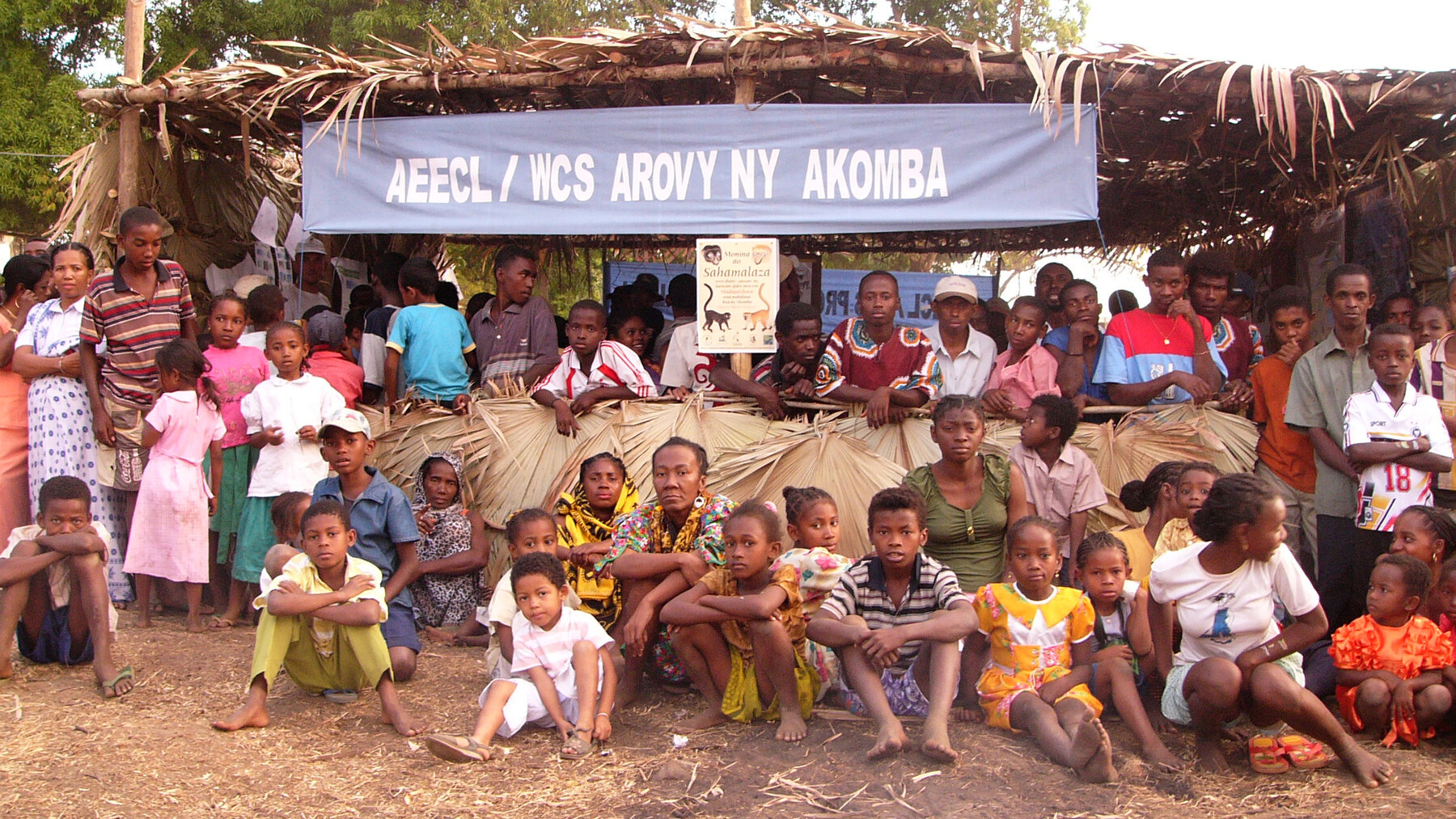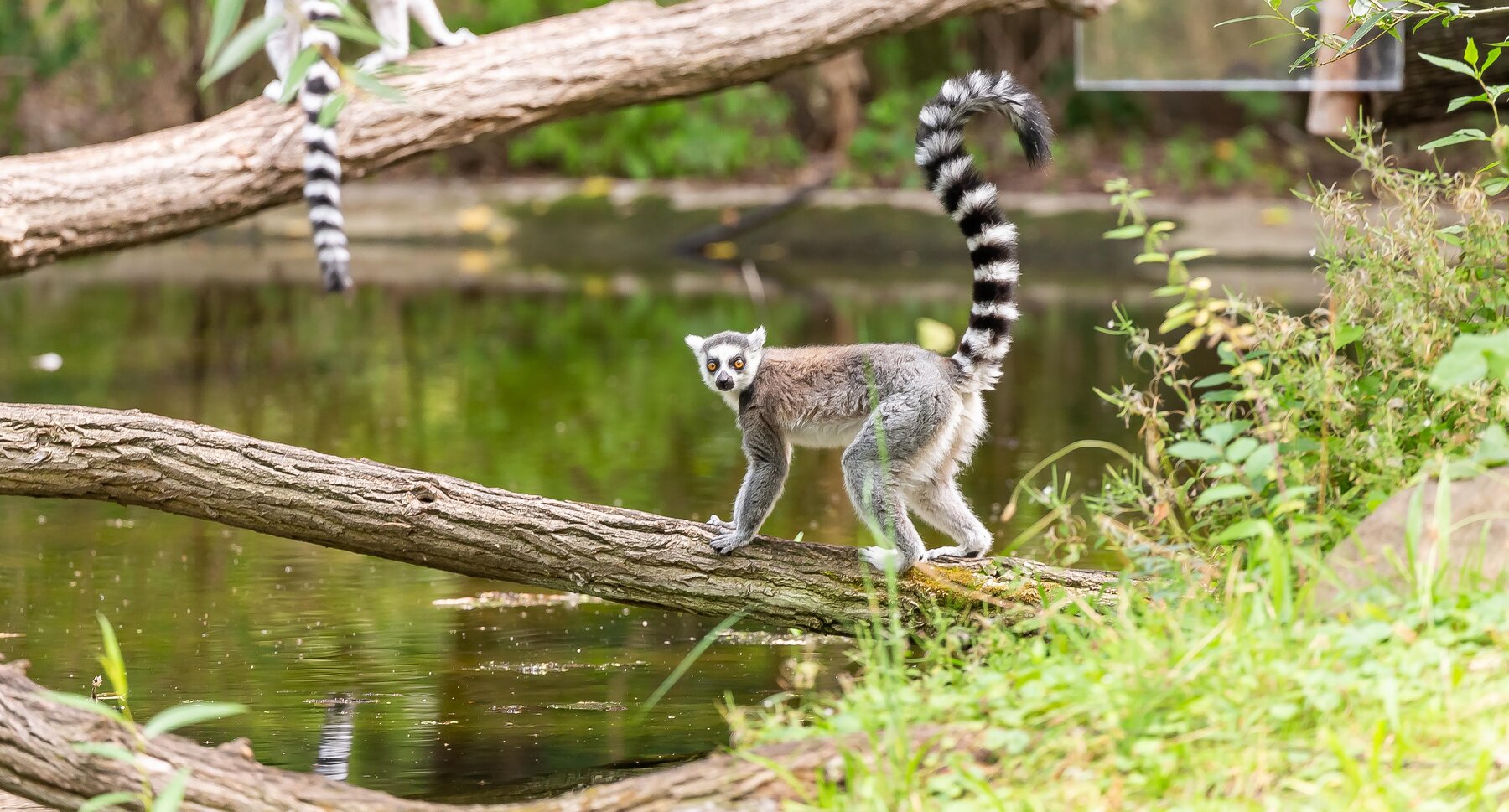
Lemurs
Tierpark Berlin is supporting efforts to protect lemurs in Madagascar.
Project facts
- Project partner
Association Européenne pour l´Étude et la Conservation des Lémuriens (AEECL)
- Species
Lemurs (Lemuridae)
- IUCN threatened status
Vulnerable to Critically Endangered (VU – CR)
- Project location
Madagascar
- Greatest threat
Habitat loss and hunting
- Response
Raising awareness through in situ educational initiatives
Threat Categories of IUCN


Lemurs at Tierpark Berlin
Tierpark Berlin welcomed its first lemurs in 1984. Today, it is home to the largest population of the primates in Germany – including ring-tailed lemurs, black-and-white ruffed lemurs, red ruffed lemurs, coquerel's sifakas, red-bellied lemurs, northern black-and-white ruffed lemurs, mongoose lemurs and collared brown lemurs. The Tierpark joined the leading organisation for lemur conservation – the AEECL – in 2016.
A delicate balance
Island-dwelling animals are hit particularly hard by habitat loss and hunting – partly due to the fact that there is no alternative land to which they can escape, and partly because the geographical remoteness of islands usually leads to the development of highly specialised, isolated ecosystems in which animal and plant species occupy very specific niches. So when an entirely new species – e.g. humans – arrives on a previously uninhabited island, it can have a devastating impact on the delicate ecological balance.
Madagascar: the lemurs’ only home
Madagascar is an example of one such ecosystem where isolation from the mainland enabled unique and particularly diverse flora and fauna to evolve over time. One of the island’s many endemic mammals is the lemur. These extraordinary primates inhabit Madagascar’s rainforests and dry forests, and like many other species on the island, their survival is at risk due to the loss of these habitats. Charcoal is still the most important fuel for the human population of Madagascar, and entire forests are burned down to produce it. In addition, the country is still feeling the effects of the 2009 Malagasy political crisis, and illegal hunting is a widespread problem.
Support from Europe
The European consortium Association Européenne pour l’Étude et la Conservation des Lémuriens (AEECL) organises lemur protection initiatives that incorporate scientific research, zoo breeding programmes, and habitat conservation measures. A total of 33 European zoos are currently members of this organisation, including Tierpark Berlin. One of the projects that the Tierpark has helped to fund so far was the multi-day World Lemur Festival. Events like these provide important platforms for informing the public and raising awareness about problems such as the keeping of lemurs as pets or poorly managed eco-tourism.
Conservation through education
Promoting school education is another important part of the conservation strategy. In many parts of Madagascar there are insufficient school meals available for the local children. The AEECL therefore decided to subsidise meals at primary schools in certain villages – including those near the Sahamalaza National Park in the northwest of the island, which is home to the critically endangered blue-eyed black lemur. This species of lemur is currently one of the most threatened primates in the world. By helping to ensure that sufficient school meals are available, the organisation hopes to encourage more schoolchildren to regularly attend class and thus learn about the importance of protecting their environment. This is information they can then pass on to other people in their villages.
Training rangers and teachers
Funding from European zoos is also being used to train and equip local gamekeepers, as well as to pay teachers’ salaries in villages close to important lemur conservation areas. Other measures that have received financial support from the AEECL include the evaluation of teachers and teaching methods, the construction and upgrade of school buildings, forest fire appraisal meetings, and the development of strategies for preventing or hindering the spread of fires in the future. As is so often the case with species conservation efforts, one thing remains clear: without the participation of the local community, the long-term protection of these wonderful animals would simply not be possible.
Photos: © Association Européenne pour l´Étude et la Conservation des Lémuriens (AEECL)
